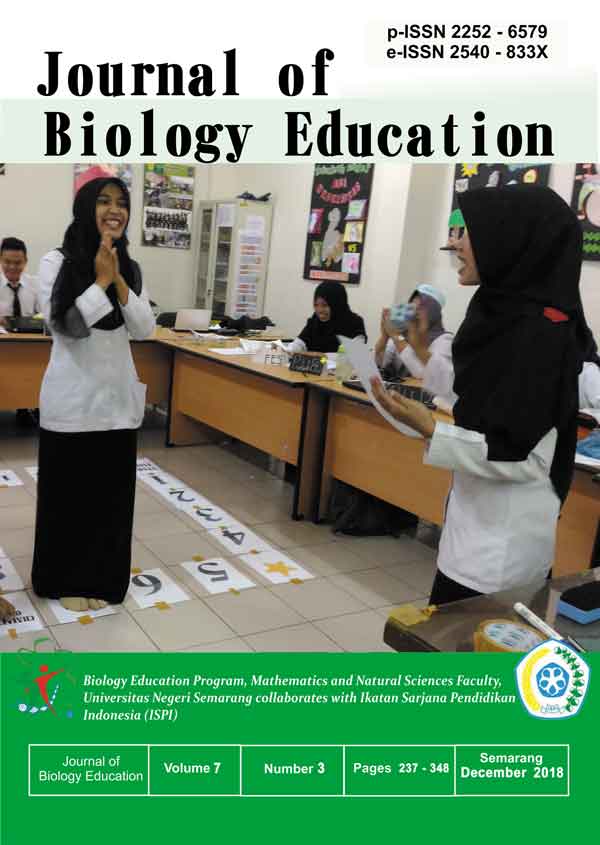The Application of Value Clarification Technique (VCT) Learning Model on Students’ Characters of Adiwiyata Program
Abstract
The concrete success of Adiwiyata program is a self-awareness of the surrounding environment in controlling undisciplined habit and taking action as a shared responsibility. The character building using Value Clarification Technique (VCT) learning model becomes a teacher’ alternative in emphasizing students’ activity. This study aimed at analyzing the effect of VCT learning on students’ characters through population density material and humans’ role in the environmental management. The research used quasi-experimental design with nonequivalent posttest only control group design. The population of this study was a total of 293 students of class VII in SMPN 2 Jati Kudus in the academic year of 2016/2017. The sampling used simple random sampling technique. The data of this research were characters of discipline, responsibility, and environmental care obtained from psychological scales instrument and observation sheets, implementation sheets of VCT models, and responses questionnaires of students and teacher. The data analysis techniques used t-test, simple regression, correlation test, and coefficient of determination. The results showed that the VCT learning model had a strong positive correlation to the responsibility character and a moderate correlation to the discipline and environmental care character that could be generalized. Moreover, the results of the correlation analysis and coefficient of determination of VCT learning on students’ characters of discipline, responsibility, and environmental care were 33.2%, 38.3%, and 22.7% respectively. These results indicated that there was another dominant factor on students’ characters.
The copyright of the article once it is accepted for publication shall be assigned to the journal as the publisher. The intended copyright includes the right to publish the article in various forms (including reprints). The journal maintains the publishing rights to the published articles.
This work is licensed under a Creative Commons Attribution 4.0 International License.








